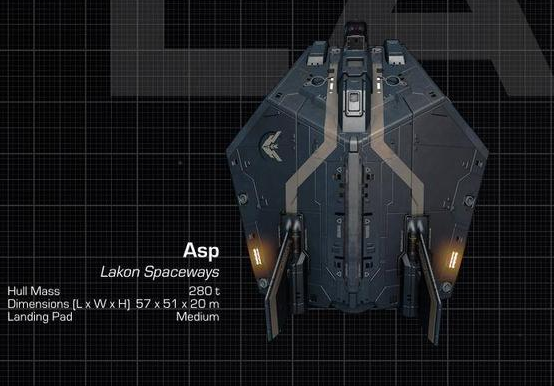Nanofoams/aerogels, nanotube fiber/sheet structures where tensile strength is needed, a small amount of very light metals (lithium, magnesium, and aluminum alloys), and a lot of relatively empty space.
Heaviest ship components are probably the modules and the windows (which I see as solid plates of sapphire glass).
Many people seem to think these craft are made with 20th century materials and methods, or cast out of iron, when in fact every single one of them would float on water, and float very high. A fully loaded federal dropship is less dense than a block of light wood, and an fully loaded Anaconda with military bulkheads would bob like a cork, or blow over in a stiff wind.
Think Zepplin or other dirigible. That's the density of construction likely seen on many of elite's ships. Even the heaviest ships are probably built more like aircraft (or even spacecraft!), than land an sea vehicles. This doesn't take into account the material used yet either.
Honestly, the game does a fair job of illustrating the lightness of construction these vessels, if one cares to look.
Here is an example:
Some nanofoams are in the ballpark of one to ten kilograms per cubic meter.
I envision a few centimeters to a meter of this material between sub-millimeter sheets of carbon fiber or nanotube sheets, metalized with a lithium alloy to make pressure tight, where needed.
When you shoot to another ship you hear "metallic sound"
Sound doesn't travel in a vaccum. Virtually all sounds you hear in game are audio cues generated by the ship's computer to improve the pilots situational awareness.
And given the armor that is not all the same hope centimeter
Armor is relative.
A centimeter of armor is extremely thick armor for an aircraft, and armor would likely only be placed around vitals regardless. Anything not critical to the basic structural integrity, or not a critical subsystem, would never have armor placed over it.
numbers about 3,000 tonnes for this ship would have been more correct
Only if you make a string of absurd assumptions.
The Asp is not 20th century boat made of steel.
Handwavium is extremely strong and light...
And can even vary from ship to ship.
Handwavium is required for quite a few things in the game, but it's not required to explain ED's ship masses and volumes.







